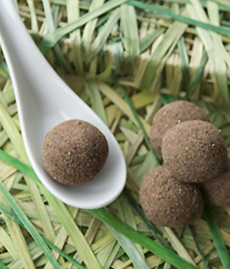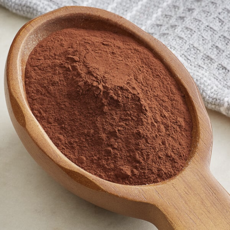

Chocolate truffles made with raw cacao, from Uli Mana, a NIBBLE Top Pick Of The Week. Photo by Corey Lugg | THE NIBBLE.
March 2005
Last Updated April 2025
|
 |
Chocolate Glossary
Chocolate Terms & Definitions: R
Here you’ll find terms including raw cacao, Rio Caribe cacao, and rustic chocolate. If you think we should consider chocolate terms and definitions other than those we have provided, click on the Contact Us link on this page. Als,o enjoy our many other food glossaries. Like food history? We have more than 750 histories that include your favorite foods.
Click on the letters below to visit other pages.
a b c d e f g h i j k l m n o p q r s t u v w x y z
This glossary is protected by copyright and cannot be reproduced in whole or in part.
RAW CACAO or RAW CHOCOLATE
Raw cacao has two meanings. First, it refers to the harvested, fermented, and dried cacao beans. They are hand-sorted, graded, packed into jute bags at the farm, and ready for sale and processing (as with coffee, each chocolate manufacturer roasts the beans according to its preferences). The bags weigh about 139 pounds (62.54 kg). The second meaning refers to the raw food movement, which does not process food at temperatures higher than 118°F in order to preserve the nutrients. Here, the beans are barely heated, ripening some of the flavors but leaving the taste of raw (unroasted) cacao beans. Foods produced at low temperatures are said to preserve the nutrients; the beans are not roasted traditionally but are processed at 118°F and below. No dairy is used. See Uli Mana Raw Cacao, a NIBBLE Top Pick Of The Week.
RED or ROUGE COCOA POWDER
Red cocoa powder is favored by professional pastry chefs for its intense bittersweet character, rich, deep-red color, and robust, fudge-like flavor. It’s used in cakes, pastries, and sauces where a rich, fudgy chocolate flavor is desired. Like other Dutch-process cocoa powder, red cocoa is treated with an alkaline substance (like potassium carbonate), but more of it than regular Dutched cocoa. This alkaline treatment reduces the acidity of the cocoa, resulting in a darker, more reddish color and a milder, more chocolatey flavor. Also see black cocoa powder.
|

Red, or rouge, chocolate is used by professional pastry chefs (photo © Webstaurant Store).
|
RIO CARIBE
A Trinitario bean grown near the Rio Caribe, in the Sucre State of Venezuela. This cacao has a slightly dark tone and a refreshing bitterness. Common flavors are coffee, almonds, slight red fruits, and pure cocoa.
ROAST, LIGHT
Some brands opt to roast cacao beans for a shorter time. This light roast imparts a sharp, fruity tone to the finished chocolate.
ROAST, DARK
A dark roast indicates that the beans have been roasted longer to further mellow the cacao’s flavor. As a result, flavors tend to have “dark” tones with traces of caramel, woods, and coffee.
ROASTING
Roasting is the first step in producing chocolate from cacao beans. Similar to roasting coffee, the heating process fully develops the chocolate flavors and aromas of the cacao beans. Roasting times vary by producer, but a typical roasting time is 30 minutes. After roasting, the nibs go to the grinding room to be ground.
ROCHER
In French, a rocher is a rock. In chocolate, rochers are slivered almonds, coated in chocolate to create clusters that are poetic chocolate “rocks” (photo at right).
|
|

Rochers: chocolate “rocks” made with almonds (photo © EH Chocolatier).
|
RUBY CHOCOLATE
Ruby chocolate is the fourth variety of chocolate, after dark, milk, and white. It was introduced in 2017 by Barry Callebaut, a Belgian–Swiss company. In development since 2004, it was patented in 2015 by inventors Dumarche et al. The patent was assigned to Barry Callebaut to produce. Ruby chocolate is made from special ruby cacao beans, which are found in Ecuador, Brazil, and Côte d’Ivoire. Similar to the differences among grape types that are grown for fine wine, the ruby cacao beans are influenced by their environment to produce nibs (beans) that deliver a pink color. The cacao must be cultivated in specific climate conditions.
|

The four types of chocolate, from top left: milk, dark, ruby, and white (photo © Barry Callebaut).
|
RUSTIC CHOCOLATE
In positive terms, “rustic” chocolate refers to a pre-industrial style of chocolate made before conching was invented. The beans were minimally processed, and less refined sugar was used. The texture was rougher and crunchier. Today, artisans like Italy’s Claudio Corallo choose to make chocolate in the old style. However, chocolate that was not intended to be made in such fashion, but which has an inferior texture and mouthfeel, can be termed “rustic.”
Continue To Next Page: Terms With S
Go To Article Index Above
Lifestyle Direct, Inc. All rights reserved. Images are the copyright of their respective owners.

|







